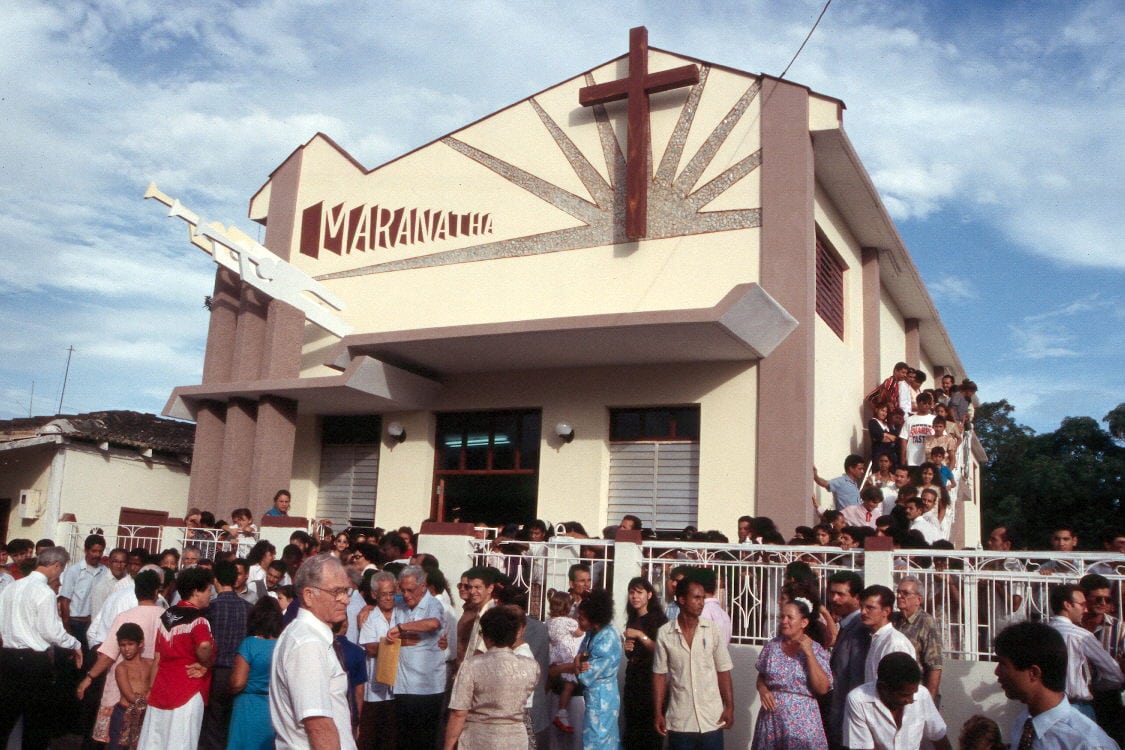
When Maranatha Volunteers International first broached the idea of working in Cuba in 1994, there were very real fears.
“We were afraid,” Maranatha president Don Noble said. “We didn’t know what we were getting into. We didn’t even know if we could go there, if we could get in, if we could accomplish anything to help the Church.”
Since then, Maranatha has held a sustained presence in the country for the past three decades, helping to increase Seventh-day Adventist membership from around 9,000 to more than 40,000. Over that time, there have been great successes, frustrations, and long periods of waiting. It’s one of the most unique, challenging, and rewarding places Maranatha has worked in over the past 54 years and 88 countries. But in the beginning, it wasn’t a given that it could be done, and it almost didn’t happen.
In the early ’90s, Cuban-American Maranatha board member Tem Suarez raised the idea of Maranatha helping the Adventist Church in his homeland. It seemed like an impossible task in a communist country. Would they be allowed? How would you even start? Then, a divine pizza dinner in Guatemala changed the course of what seemed possible for Maranatha.
Noble, Suarez, and several representatives from the General Conference of the Seventh-day Adventist Church were present for a large-scale dedication for all the churches Maranatha had built in Guatemala, including Robert Folkenberg, then president of the General Conference. Garwin McNeilus, an independent businessman and missions supporter, said he wanted to build churches in Cuba. Folkenberg asked if Suarez would be willing to take the lead.
“I told them that if we can build one church in Cuba, it’ll be a miracle,” Suarez, who passed away in 2003, said. “I was scared, but l said if God wanted to do it, I would do it.”
In 1994, after the meeting in Guatemala, Suarez and a Maranatha team went back to Cuba. They met with people from the Cuban Union Conference office and toured Adventist churches across the island. They learned the Cuban church was depressed after 36 years of persecution. Most of the buildings were falling apart. Maranatha determined to move ahead with 100 new churches and 100 renovated churches. There would also be 100 evangelistic campaigns surrounding those churches. The entire project was called “Christ for Cuba.”

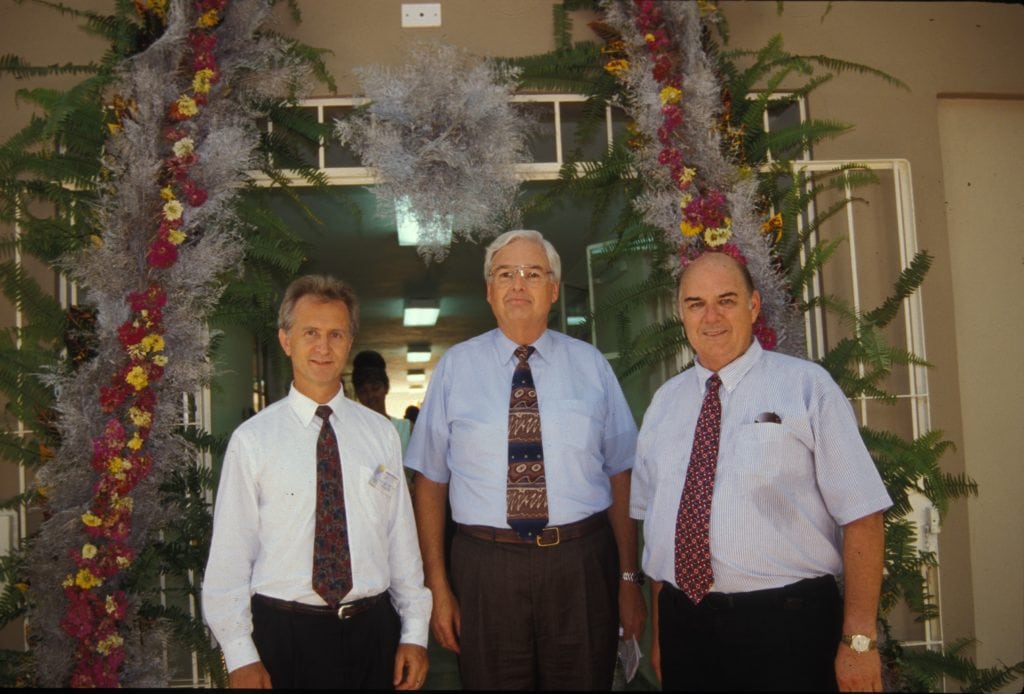

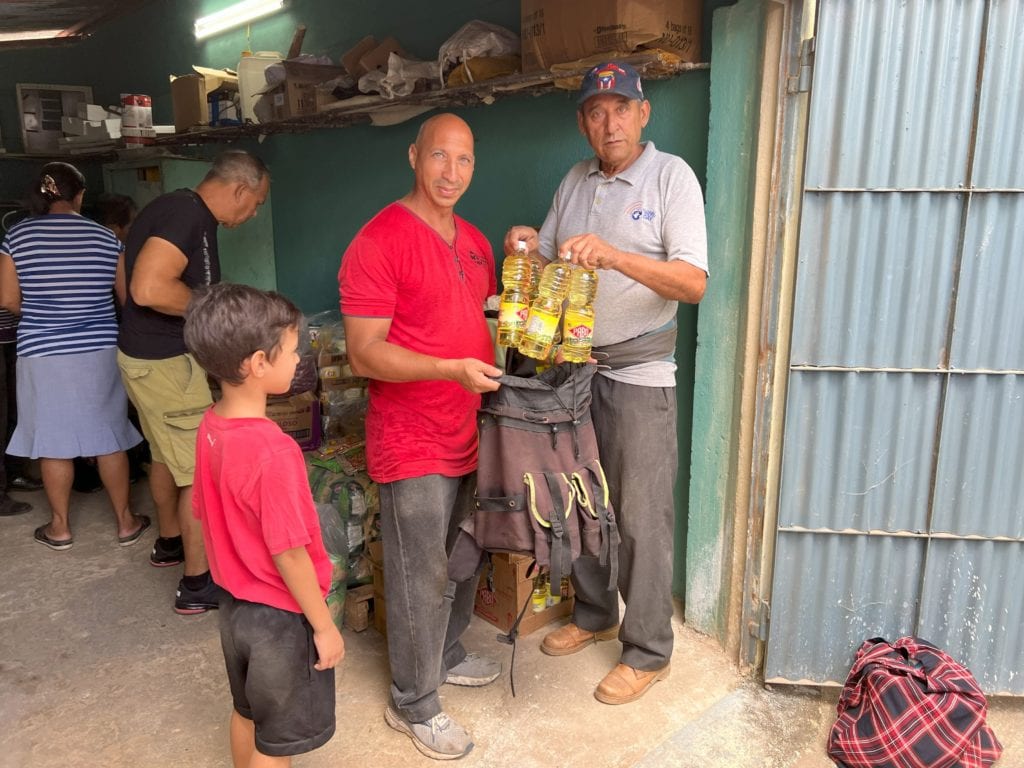
Unlike similar efforts in other countries, Cuba required many additional steps in the construction process. Approvals and materials were often difficult to procure for churches. There were many hurdles that had to be cleared. Nevertheless, slowly and surely, Maranatha continued to push ahead and, over the remaining years of that decade, accomplished the goal for churches, and even constructed a campus for the Adventist Seminary on the island.
But after that initial period of great activity in the ’90s, permission to do new projects ceased. It became a waiting game as Maranatha patiently stayed ready to continue the work when conditions changed. It wouldn’t be until the 2010s before Maranatha would be cleared to build another church — this time for the faithful members of the Cardenas church, who had needed a new sanctuary since Maranatha’s first visit more than 20 years before. In 2017, these patient saints received a beautiful new sanctuary.
Fast forward to late 2022 — Maranatha had been unable to work on any projects in Cuba for nearly five years. While many countries around the world were returning to a semblance of normalcy after the COVID pandemic, Cuba’s economy was still reeling from the lack of tourism. Of course, things have always been more difficult here, isolated from much of the world through economic embargo, but tourism always provided enough means to keep society running. In September 2022, the current president of the Adventist Church in Cuba, Aldo Perez, spoke at Maranatha’s annual convention and shared how dire the situation had become.
He explained that there was very little food, medicine, or fuel on the island, and the people were suffering. Each citizen receives a ration book they can use to get food at distribution centers, at which there are only about six staple items: rice, beans, coffee, sugar, one-fourth cup of cooking oil each month, and salt every three months. But because of the tough economic conditions, there usually isn’t enough. It is common to see long lines of people waiting at these distribution centers, sometimes all day, for a single item. Each week they have to decide whether they will go to work and potentially miss a crucial food item at the distribution center or go to their job to earn an income. But even with that income, the supplemental food sold in open markets is often too expensive to purchase anyway, due to high inflation.
Perez appealed to Maranatha to provide help outside of the conventional construction assistance they were accustomed to. Maranatha agreed. “We decided to do something different that we typically don’t do as an organization — that’s actually helping them right at that core need,” Noble said. “Hey, they need cooking oil, they need rice, they need beans, they need aspirin. You know, just basic, basic stuff.”
Starting in November 2022, Maranatha began raising funds to send critical aid to Cuba as a part of a global day of giving called GivingTuesday. Donors responded, giving more than US$300,000 for a handful of shipping containers to be filled with life-saving food, medicine, and other necessities. In January, the first two of five containers arrived in the port of Havana. Sometimes shipments like these are held up in port for months, waiting for inspection. Thankfully, God was watching over the first two, and they made it into Maranatha’s hands without incident.
The impact was immediate. As the supplies were distributed through the Adventist Union and Seminary in the west and in the eastern city of Holguín, people came to receive the critical items with smiles and gratitude. Noble traveled to Cuba to check on the progress and was moved to see the end goal of this ambitious initiative: alleviating pain.
“It’s pretty meaningful to see the reality of the people who you were actually raising the money for, picking up the food, and you know it’s changing their life,” Noble said. “Some of them were laughing, some of them were crying. There was a mix of emotions because they didn’t know what to do with themselves. One man said, ‘You don’t understand, we can’t get any of this stuff. It doesn’t exist for us.’ They didn’t know how to respond.”

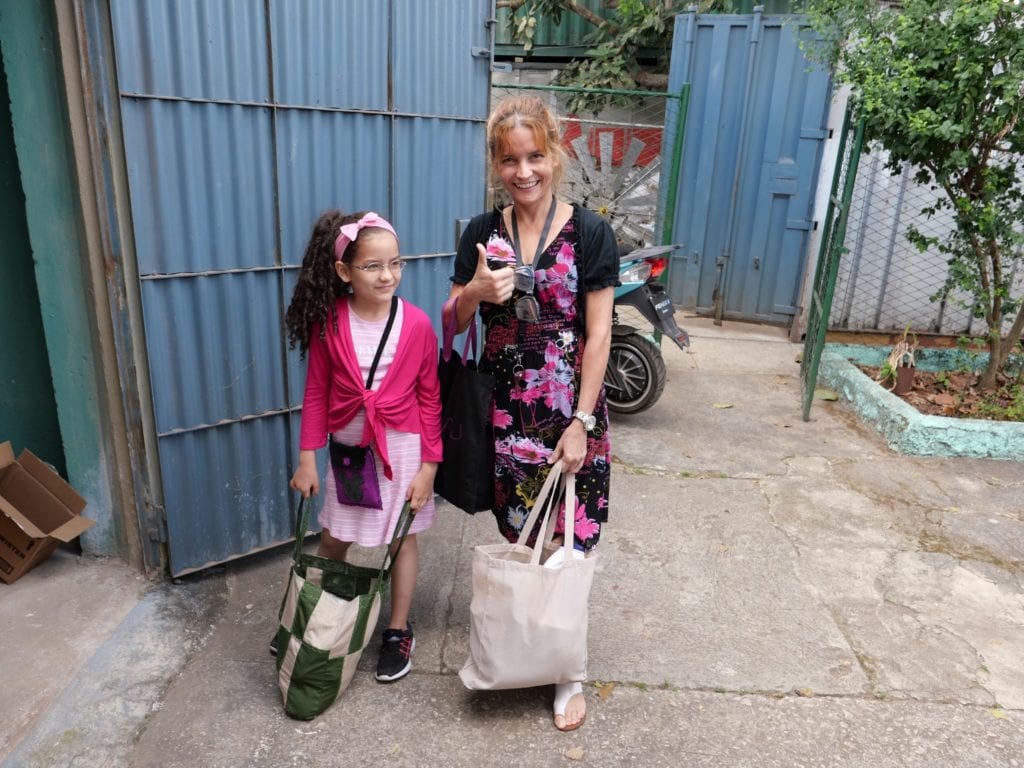
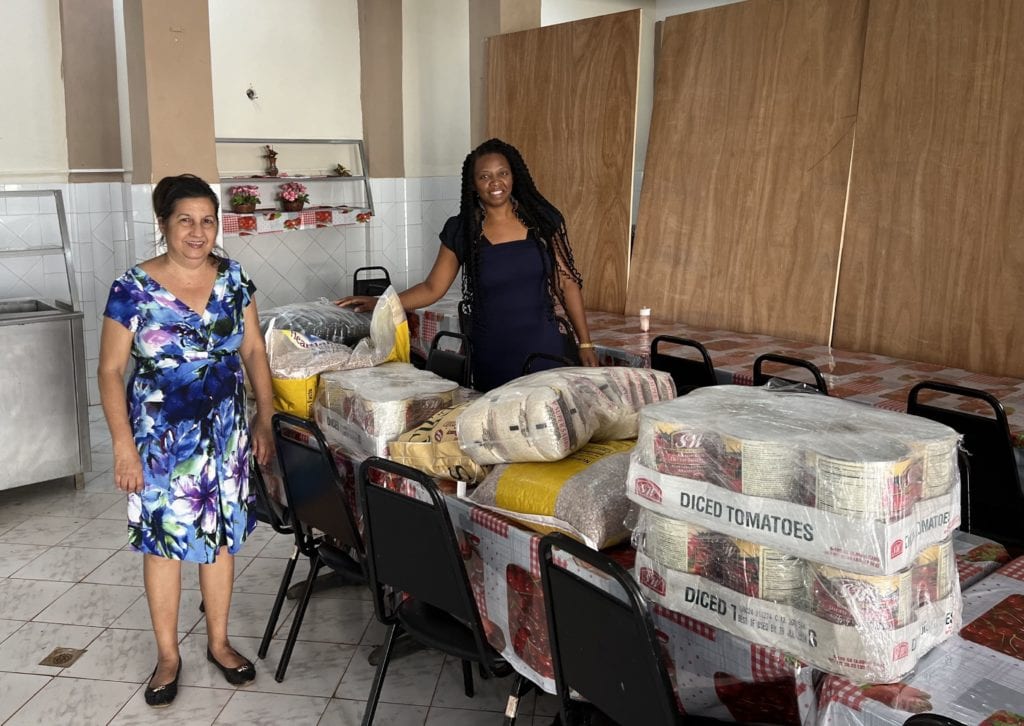
Throughout this campaign, something else is beginning to happen in Cuba: signs of loosening restrictions. Projects are starting to be approved once again. Permissions are flowing. And this good news couldn’t come quickly enough. Despite all the hard times recently, which have forced some residents to flee the island, the Adventist Church in Cuba is actually growing. When people are confronted with crisis, they tend to turn to God, and there are congregations once more in urgent need of proper places of worship.
Currently, Maranatha is looking at half a dozen sites in need of new construction or remodeling, and permission is secured for all of them. Plans are in motion to ship materials for the first project at Nuevitas, a congregation whose old church building was condemned and torn down. The members now meet separately, scattered in different homes each Sabbath.
It’s an exciting time for Maranatha in a long history of “on again, off again” in Cuba. Nearly 30 years after that initial visit, one that was steeped in trepidation and unknowns, Maranatha is still in Cuba working to help grow the church. Suarez, who passed away 20 years ago in May, the man who dared to dream of the possibilities here, would be proud. For Noble, it’s been one big exercise in following God’s leading above all else.
“Every time that I have felt that it was time to move on, something has taken place that has motivated us to stay involved further,” Noble said. “I believe God is leading. Where is He leading right now? Well, I’ll tell you when we look back. I can’t tell you now. We always ask the question, ‘Is this the will of the Lord?’ That’s the big question. Because if it is, it can’t fail. And that’s where I feel we are right now. Whether this will be the same approach that we use in a month or two months or five months, I don’t know, but we’ll take a little step at a time. That’s the way it’s been for 30 years.”
The original version of this story was posted on Maranatha’s Volunteer magazine.